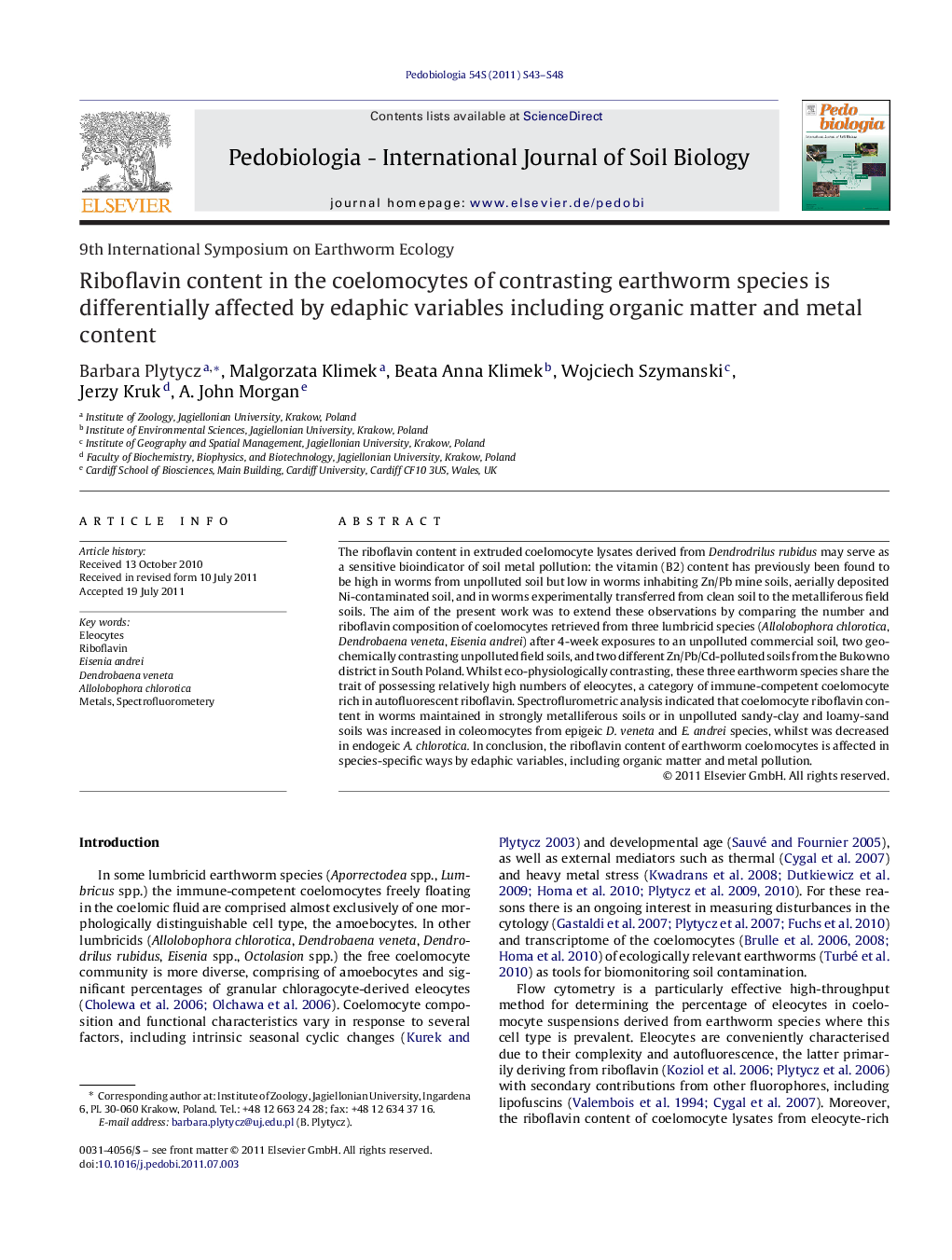| Article ID | Journal | Published Year | Pages | File Type |
|---|---|---|---|---|
| 2061291 | Pedobiologia | 2011 | 6 Pages |
The riboflavin content in extruded coelomocyte lysates derived from Dendrodrilus rubidus may serve as a sensitive bioindicator of soil metal pollution: the vitamin (B2) content has previously been found to be high in worms from unpolluted soil but low in worms inhabiting Zn/Pb mine soils, aerially deposited Ni-contaminated soil, and in worms experimentally transferred from clean soil to the metalliferous field soils. The aim of the present work was to extend these observations by comparing the number and riboflavin composition of coelomocytes retrieved from three lumbricid species (Allolobophora chlorotica, Dendrobaena veneta, Eisenia andrei) after 4-week exposures to an unpolluted commercial soil, two geochemically contrasting unpolluted field soils, and two different Zn/Pb/Cd-polluted soils from the Bukowno district in South Poland. Whilst eco-physiologically contrasting, these three earthworm species share the trait of possessing relatively high numbers of eleocytes, a category of immune-competent coelomocyte rich in autofluorescent riboflavin. Spectroflurometric analysis indicated that coelomocyte riboflavin content in worms maintained in strongly metalliferous soils or in unpolluted sandy-clay and loamy-sand soils was increased in coleomocytes from epigeic D. veneta and E. andrei species, whilst was decreased in endogeic A. chlorotica. In conclusion, the riboflavin content of earthworm coelomocytes is affected in species-specific ways by edaphic variables, including organic matter and metal pollution.
